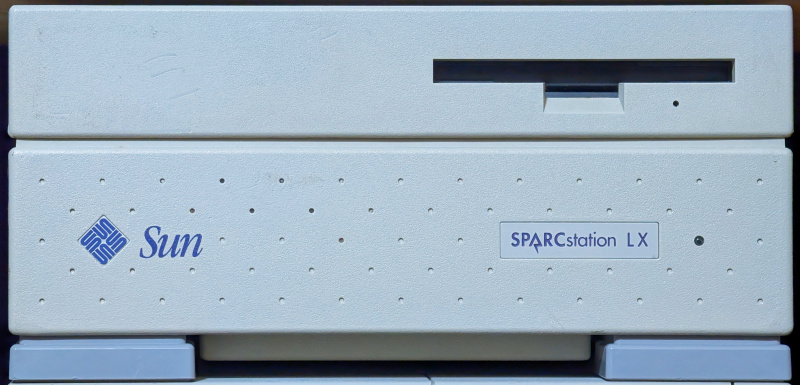SPARCstation LX (Sun 4/30)
Gallery

Image of OSfOM.org Collection's SPARCstation LX (Sun 4/30).
Technical Specifications
| Model: | SPARCstation LX (Sun 4/30) |
|---|---|
| Codename: Platform: |
Sunergy sun4m |
| Processor: Math Copro: |
microSPARC (in CPU) |
| Clock Speed: | 50MHz |
| RAM: | max. 128MB |
| Graphics: | on-board Sun Turbo GX (cgsix) |
| Operating System: | SunOS 4.1.3c to 5.9 (Solaris 9) - Linux, NetBSD, OpenBSD |
| Introduced: | November 1992 |
| Dealer price (net): | 19.110DM (16MB RAM, 424 MB HD, 19" greyscale display) (Jun. 1993) |
The SPARCstation LX: Enhanced Lunchbox Computing
Released in November 1992 alongside the SPARCclassic, the Sun Microsystems SPARCstation LX (also known as the Sun 4/30) offered an enhanced "lunchbox" workstation experience. While sharing the compact form factor and the 50 MHz microSPARC I processor with the SPARCclassic, the LX provided notable upgrades, particularly in graphics and audio capabilities.
The SPARCstation LX was designed for users who needed more than the basic functionality of the SPARCclassic but still preferred the space-saving "lunchbox" chassis over the larger "pizza box" models like the SPARCstation 10. Its key differentiator was the inclusion of an accelerated onboard color framebuffer (a CG6), offering significantly better graphics performance than the SPARCclassic's onboard CG3 or the monochrome option on the IPC. The LX also featured 16-bit audio, a step up from the 8-bit audio found on the SPARCclassic.
These enhancements made the SPARCstation LX a more capable machine for graphical applications, software development with graphical user interfaces, and multimedia tasks prevalent in the early 1990s. It retained the SBus expansion slots, allowing for further customization, and ran the robust Solaris operating system.
The SPARCstation LX was a solid mid-range offering in Sun's SPARCstation lineup. It successfully combined the popular compact form factor with improved performance and features, appealing to a wide range of professional and technical users. Like other Sun systems of this era, the NVRAM battery is a common maintenance item for collectors today.
The SPARCstation LX is remembered as a capable and popular "lunchbox" workstation that provided a good balance of size, performance, and features in the early-to-mid 1990s.